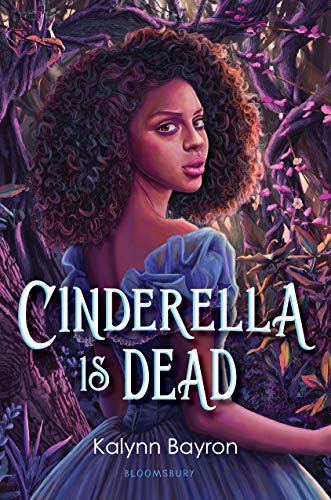Family Book Club: Cinderella is Dead

Title: Cinderella is Dead by Kalynn Bayron
Reading level: young adult
Synopsis: When Cinderella died, Prince Charming held up her memory as the perfect example of a wife. He even distributed the palace-sanctioned Cinderella story to every household to act as a guide for young girls. Now, 200 years later, that story is used as the backbone of a series of laws meant to keep women and girls subservient. Each year, the girls who've turned 16 attend a mandatory ball, where they're chosen as wives. They have no say in who chooses them, and if they end up unhappy, they have to mourn their life silently or risk being "forfeit"—disappeared.
Sophia doesn't even want a husband, let alone who treats her like a commodity. On the evening of the ball, she arrives with her best friend and secret love, Erin, who believes in the magic of the Cinderella story, even if she can see how unfair the process is. Once they get inside, though, they realize how misleading the propaganda is—the ball is basically an auction. Sophia can't stand watching suitors wooing Erin—or their attempts to woo her—and she flees, even though leaving the ball is grounds for forfeit. She finds herself at Cinderella's mausoleum and meets Constance, the last descendent of Cinderella's step-sister and of their whole family. Constance has spent her life in hiding, training and waiting for the moment to avenge her family. Together, they hatch a plot to find the infamous fairy godmother and overthrow the government once and for all—and maybe fall for each other along the way.
Categories: representation, feminism, LGBTQIA+
Questions:
- Cinderella is Dead isn't a retelling of a fairy tale, but it is based in the world of one. WHat's a fairy tale world you wish you could explore more? What would you want its future to hold?
- Historically, fairy tales have been used to teach kids about morals (either that or scare them into behaving—read the original Grimm fairy tales for that take). What do you think the main lessons are in this book? Did Bayron do a good job of explaining what she wants readers to learn?
- Fairy tale characters almost always fit into an archetype. Take a look at this list of common ones. Which do you think you are? Which would you like to be? Which would you least like to be?
- Bayron wrote a character we rarely see in fairy tales, at least not as the main character: a queer Black girl. What are different places or situations you've been in where you feel like you don't fit the "main character" role? What are places/situations where you see other people not fitting the "main role"? Are there things you can do to make those places more comfortable for yourself and others?
- Every hero in a fairy tale needs to go on a hero's journey—basically, an expedition (often geographical but sometimes mental or emotional) to find what they want and/or need. What would your hero's journey focus on? What have been obstacles you've faced in your life that have kept you from achieving or gaining something you've wanted?
Activity: Bayron wrote this book so other Black girls could see themselves as a main character of a fairy tale—something Bayron didn't have herself as a girl. Because so many of the fairy tales that circulate in the US originate from Western Europe, they almost always feature white characters and heteronormative, patriarchal societies, with female characters playing the role of doting daughter, sister, wife, or mother—basically, defined by the position they're in to men—and boys only caring about a wife or control of a kingdom. Just like Bayron, you have the ability to do some rewriting. Think of a fairy tale (or other folklore) you've always loved but don't feel represented by, and write a version where a kid like you is the main character.
Thank you so much to Red Balloon Bookshop for partnering with us on this series! If you'd like to see all of the Family Book Club picks in one place, check out their FBC page.